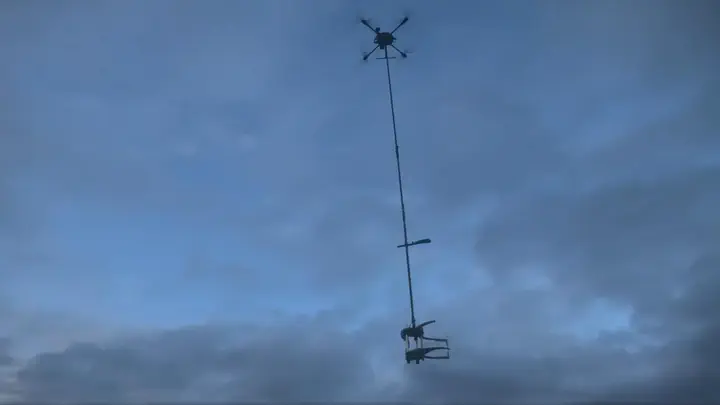Working as an engineer in ecosystem research - My work at Isodrones
 Drone carrying a tool to sample small branches. Photo credit: Isodrones
Drone carrying a tool to sample small branches. Photo credit: IsodronesAfter finishing my master degree in mechatronics I decided to join the Isodrones projects. Certainly not the most typical choice as most of my friends from university started to work in the industry. While part of my work involves certain amount of engineering, other parts are certainly out of the field of engineering. In this post, I would like to give a short impression about my experience working in the Isodrones project with a background in engineering.
Generally, I would say that most work is a more applied engineering compared to solving one specific problem. There are the little problems, from fixing data logger programs in the middle of the night while being in the field in Costa Rica. To connecting various sensor you never heard of before, what is a sapflow sensor? To completely engineering unrelated tasks, like measuring plant specific parameters, what the hell is leaf area index? Stomatal conductance? Ah, at least conductance meant something to me. A lot of engineering concept are used in other fields, stomatal conductance just describes the conductance of water vapor through pores of the leaf very similar to electrical conductance. Instead of working with differential equation of forward serial robots, differential equations also describe leaf temperature dynamics.
The fieldwork certainly is something that you will not do studying engineering. The time in Costa Rica thought me how different it is to study nature. As an engineer you usually use tools or methods that are well understood, e.g. all steps to design a bridge are well known. In ecosystem research, it goes the other way around, we are looking for the tools or methods that allow us to understand something not well understood. What are the mechanics that drive a tree to develop deep roots? How does a tree regulate leaf temperature? Building the tools and methods, which can provide the data to help to answer these questions is the favorite part of my work.
The more challenging part is to understand the data of an, for me, unknown process running in nature. You think you understand your data and then you look at the next tree and it is different. How is the tree different to the other one? Is it bigger? Is the soil different? The species? Often times, just showing that there is a consistent difference is a success. From my experience this process can be slow and tedious, as nature is far more complex than we often are willing to admit. At the same time, this process can pay of and you are able to give an explanation to something, which was not understood before.